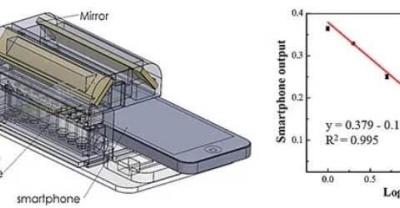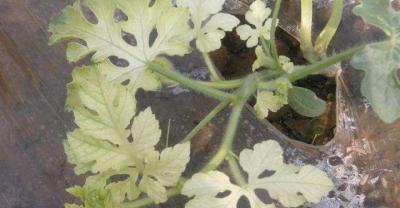Huda's first "1+4" female doctor 3D printing technology to detect pesticide residues
Wuhan Evening News, Wuhan, Feb. 11 (correspondent Duan Mengyao reporter Hu Yihua) recently, Wang Yijia, a doctoral student and major in material preparation and testing technology, published an article on Analytical Chemistry (the highest journal in the field of analytical chemistry), using 3D printing technology to detect pesticide residues.

The concept map of the technical model
It is understood that under the guidance of professors Lin Yuehe and Dudan of Washington State University, Wang Yijia's team designed and printed a small optical detection platform with the help of 3D printing technology, using smartphones as information trappers. It can monitor and transmit optical information in real time, and realize real-time monitoring of pesticide 2myr4-dichlorophenoxyacetic acid residues in food, ecological water sources or human metabolic fluids at room temperature.
It is reported that pesticide residues in food and environment have a great impact on human health and environmental protection. Pesticide residues in the surface of grains and vegetables or drinking water, after ingestion of the human body, will have a great impact on health. High concentrations of pesticides can even cause acute poisoning, nausea, vomiting and other adverse reactions.
Most of the traditional pesticide detection methods are time-consuming and labor-consuming, and sometimes expensive large instruments are needed to detect pesticide residues effectively. Wang Yijia's team combined with the gradual development of smartphones, using the smartphone's own voice control system, high-definition parameters adjustable cameras and temperature sensors to use 3D printing technology to detect pesticide residues.
"the scheme fails before it succeeds, and 99% of our experiments are failed." Wang Yijia said, "every time we fail, we are constantly modifying the plan, slowly groping and optimizing the experimental conditions to get good results."
The top journal paper knowledge platform X-MOL spoke highly of the device: "the device is not only high sensitivity, but also low cost, small size, light weight, and can even realize real-time monitoring of pesticide residues in environmental samples. The device is compact and portable, which not only saves the detection cost, but also achieves accurate and reliable results, realizes the convenient application of smart phones in daily life, and is of great significance to promote the development and construction of smart phone detection devices. "
[editor Li Shaowen] operator: Tang Jun MX002
- Prev

Now the pesticide residues in grain and vegetables all exceed the standard, but you have nothing to be afraid of!
Now the pesticide residues in grain and vegetables all exceed the standard, but you have nothing to be afraid of! It's not easy for this fat man to make money, and fruit stalls have to keep pace with the times and pass by.
- Next

Music broadcast on the screen, awesome people are playing with the artifact of "Pesticide eating Chicken" on TV.
Now the most popular games are two: "Pesticide, Chicken eating" game, mobile games enthusiasts have a lot of fun. They are often seen with their heads down and their hands facing each other.
Related
- Fuxing push coffee new agricultural production and marketing class: lack of small-scale processing plants
- Jujube rice field leisure farm deep ploughing Yilan for five years to create a space for organic food and play
- Nongyu Farm-A trial of organic papaya for brave women with advanced technology
- Four points for attention in the prevention and control of diseases and insect pests of edible fungi
- How to add nutrient solution to Edible Fungi
- Is there any good way to control edible fungus mites?
- Open Inoculation Technology of Edible Fungi
- Is there any clever way to use fertilizer for edible fungus in winter?
- What agents are used to kill the pathogens of edible fungi in the mushroom shed?
- Rapid drying of Edible Fungi

